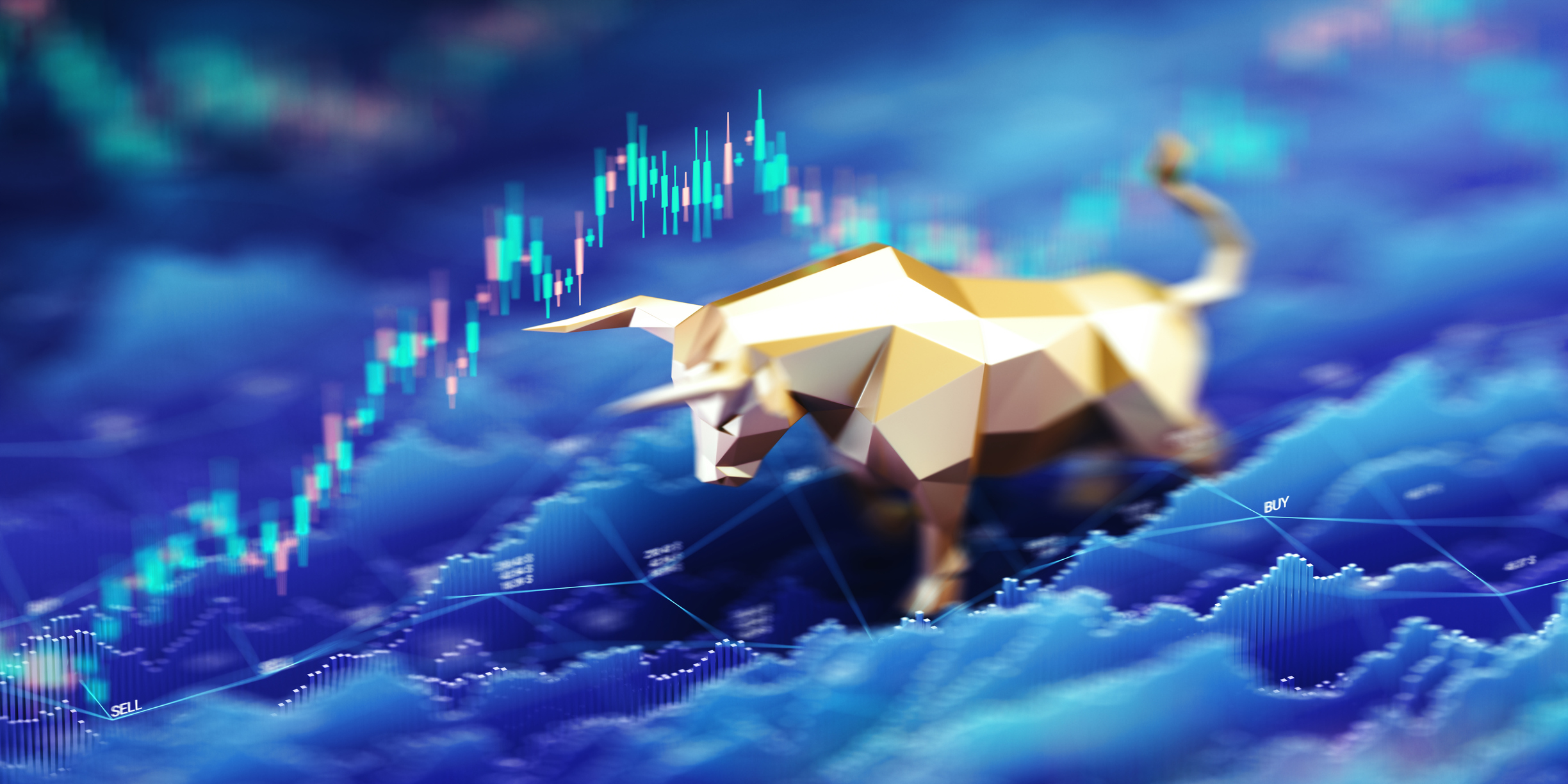Already Hit Your 401(k) Limit in 2025? Here's What to Do Next
Maxed out your 401(k) contributions, but still want to tuck away more money for retirement this year? Here are seven ways you can take advantage of being a super saver.


Congrats on maxing out your 401(k) in 2025 — that’s a huge win and a major victory for your retirement fund. Keep the momentum going into 2026.
Given your financial discipline, you may now have room and the additional funds to explore other tax-advantaged accounts or investment strategies that align with your goals.
Here are seven ways to utilize your surplus savings once you’ve reached the contribution limit, considering tax advantages, flexibility and long-term wealth-building potential.
From just $107.88 $24.99 for Kiplinger Personal Finance
Become a smarter, better informed investor. Subscribe from just $107.88 $24.99, plus get up to 4 Special Issues

Sign up for Kiplinger’s Free Newsletters
Profit and prosper with the best of expert advice on investing, taxes, retirement, personal finance and more - straight to your e-mail.
Profit and prosper with the best of expert advice - straight to your e-mail.
What are 2025 401(k) Contribution limits?
For 2025, the maximum contribution limits for 401(k) plans are as follows:
Employee deferrals: $23,500 (up to $24,500 in 2026)
Catch-up contributions (for those age 50 and older): $7,500 (up to $8,000 next year)
Super catch-up contributions (for those ages 60 to 63, per SECURE 2.0 Act): $11,250 (stays the same for 2026)
Total combined employee and employer contributions: $70,000 (or $77,500 for those age 50 and older, $81,250 for those ages 60 to 63) in 2025. These numbers rise to $72,000 (or $80,000 for those age 50 and older, $83,500 for those ages 60 to 63) in 2026.
These limits apply to 401(k), 403(b), most 457 plans, and the federal government’s Thrift Savings Plan. Total contributions can't exceed 100% of the employee’s compensation.
Here’s what to do next
David Dickman, CFP®, Vice President and Partner at Rothschild Wealth Partners, recommends that after maxing out your 401(k), you explore less obvious investment options. Take a holistic view of your financial situation, and consider upcoming life events to make informed decisions.
“Carrying high-interest liabilities or aspirations for near-term life events could dictate your decision beyond standard advice,” he says.
He adds that considering the liquidity and tax benefits or ramifications of certain contributions and withdrawals is important in managing the “life cycle” of your finances. “Additionally, it is usually recommended to retain, on average, six months of living expenses in cash or equivalents.”
What's next for you?
1. Consider a Deferred Compensation Plan
Dalton Richards, CPFA® and Financial Planner at Balefire, says the first step to take to secure your financial future is to capitalize on your company’s deferred compensation plan.
“Many executives, partners and senior professionals have access to non-qualified deferred compensation (NQDC) plans, which allow you to defer a portion of your salary and/or bonus into a tax-deferred account,” he says.
If your employer offers an NQDC plan, you can defer a portion of your income to reduce current taxable income in your highest-earning years. You can choose when to receive payouts and benefit from tax-deferred investment growth beyond 401(k) limits.
Richards adds that this strategy is especially effective if you expect to be in a lower tax bracket in retirement, or you're working toward early retirement and want to spread out your income across multiple years.
2. Choose a Health Savings Account (HSA)
HSAs are the only accounts that offer triple tax savings — tax-deductible contributions, tax-deferred growth and tax-free withdrawals for medical expenses. Dickman explains that HSA accounts are highly underutilized and can be leaned on to help cover unexpected medical expenses, which can arise later in life.
“The government has also recently expanded qualified expense categories to include items such as certain OTC medications, mental health services, weight loss and nutritional programming, and preventative care,” Dickman adds.
As a side note: Three big changes coming to HSA plans in 2026 include: HSA contribution limits increase to $4,400 for individuals and to $8,750 for families. Bronze and Catastrophic ACA plans will qualify for HSA eligibility in 2026 and Direct Primary Care (DPC) memberships and telehealth coverage will be HSA-compatible in 2026.
3. Explore a backdoor Roth IRA
For high earners whose income exceeds the Roth IRA contribution limits — $150,000 to $165,000 in 2025 for single filers ($153,000 to $168,000 in 2026) or $236,000 to $246,000 for married couples filing jointly in 2025 (rising to a range of $242,000 to $252,000 in 2026) — a backdoor Roth IRA offers a path to additional savings.
Your savings grow tax-free and can be withdrawn tax-free in retirement. However, if you already have pre-tax IRA funds, watch out for the pro-rata rule, which could result in unexpected taxes during the conversion.
4. Check out a mega backdoor Roth
Richards also recommends leveraging a mega backdoor Roth if your employer's 401(k) plan allows after-tax contributions above the standard deferral limit — up to $70,000 total for 2025 ($72,000 in 2026), including both employee and employer contributions), as well as in-plan Roth conversions or in-service rollovers. "It is one of the most powerful tools available," he says.
These after-tax contributions can be converted to a Roth 401(k) or rolled over to a Roth IRA, allowing for significantly larger Roth contributions if the plan permits. Your money grows tax-free with no required minimum distributions (RMDs) if in a Roth IRA, and there are no income limits.
5. Take a look at a Donor-Advised Fund (DAF)
A donor-advised fund (DAF) is a dedicated giving and investment account designed to support charities you value. Jennifer Kohlbacher, CPA, director, wealth strategy at Mariner Wealth Advisors, highlights the benefits of donor-advised funds.
“When contributing cash, securities or other assets to a DAF, you can typically claim an immediate tax deduction, and the assets in the DAF can be held, sold without tax liability, invested for tax-free growth, and distributed to your chosen charities over time.”
Additionally, the assets in the DAF are excluded from your estate, shielding them from estate taxes.
6. Look into taxable brokerage accounts
Taxable brokerage accounts offer both long-term growth and flexibility. These accounts don't offer tax deferral, but you’ll pay lower tax rates on long-term capital gains and qualified dividends.
Richards says this is ideal for long-term buy-and-hold strategies, especially for those pursuing early retirement, education funding or big-ticket goals, as funds are accessible without age restrictions or penalties.
“Focus on low-cost, diversified investments like index funds or ETFs, municipal bonds, and tax-loss harvesting to minimize fees.”
7. Size up tax-deferred annuities
Unlike 401(k)s or IRAs, deferred annuities allow unlimited contributions with tax-deferred growth. While variable annuities depend on market performance, fixed annuities offer guaranteed returns.
When you retire, you can convert to an income annuity to spread out tax liability or take withdrawals, which are taxed as ordinary income. Watch for fees and surrender charges, and evaluate if the tax deferral outweighs the costs.
Additional considerations
"The problem with only sheltering money in Roths, HSAs and other tax-advantaged accounts is that those dollars are locked up," said Stephan Shipe, Ph.D., CFA, CFP®, founder and CEO of Scholar Advising.
"We often see high earners become net-worth rich but liquidity-poor," he says. "They have plenty saved, but all in accounts they can't access without penalty. That's a challenge when you want to pay down a mortgage, buy a second home, or make a large purchase."
High earners also often face higher tax brackets, so it's best to prioritize tax-advantaged accounts to reduce current taxable income and secure tax-free growth.
You might also want to consider aligning your portfolio with your risk tolerance and retirement timeline, gradually shifting to more conservative assets as you approach retirement.
Supercharge your financial future
As a "super saver," you’ve got a fantastic opportunity to supercharge your financial future with these strategies.
Consult a financial adviser to tailor these options to your goals, tax situation and risk tolerance, ensuring you make the most of your wealth-building potential.
Related Content
Profit and prosper with the best of Kiplinger's advice on investing, taxes, retirement, personal finance and much more. Delivered daily. Enter your email in the box and click Sign Me Up.

For the past 18+ years, Kathryn has highlighted the humanity in personal finance by shaping stories that identify the opportunities and obstacles in managing a person's finances. All the same, she’ll jump on other equally important topics if needed. Kathryn graduated with a degree in Journalism and lives in Duluth, Minnesota. She joined Kiplinger in 2023 as a contributor.
-
 My Retirement Learning Curve, 1 Year In
My Retirement Learning Curve, 1 Year InA retiree checks in with what they wish they knew early on and what they've changed about their plan one year in.
-
 Introducing Your CD's Edgier Cousin: The Market-Linked CD
Introducing Your CD's Edgier Cousin: The Market-Linked CDTraditional CDs are a safe option for savers, but they don't always beat inflation. Should you try their counterparts, market-linked CDs, for better returns?
-
 'Humbug!' Say Consumers, Despite Hot GDP: Stock Market Today
'Humbug!' Say Consumers, Despite Hot GDP: Stock Market Today"The stock market is not the economy," they say, but both things are up. Yet one survey says people are still feeling down in the middle of this complex season.
-
 My Retirement Learning Curve, 1 Year In
My Retirement Learning Curve, 1 Year InA retiree checks in with what they wish they knew early on and what they've changed about their plan one year in.
-
 Introducing Your CD's Edgier Cousin: The Market-Linked CD
Introducing Your CD's Edgier Cousin: The Market-Linked CDTraditional CDs are a safe option for savers, but they don't always beat inflation. Should you try their counterparts, market-linked CDs, for better returns?
-
 'Humbug!' Say Consumers, Despite Hot GDP: Stock Market Today
'Humbug!' Say Consumers, Despite Hot GDP: Stock Market Today"The stock market is not the economy," they say, but both things are up. Yet one survey says people are still feeling down in the middle of this complex season.
-
 The SEC Is Concerned for Older Investors and Retirement Savers. Here's What You Should Know.
The SEC Is Concerned for Older Investors and Retirement Savers. Here's What You Should Know.The SEC focusing on older investors, retirement and college savers, and private securities. Here's how those changes impact you.
-
 Vesting, Catch-Ups and Roths: The 401(k) Knowledge Quiz
Vesting, Catch-Ups and Roths: The 401(k) Knowledge QuizQuiz Test your understanding of key 401(k) concepts with our quick quiz.
-
 Why You Should Pay Attention to Company Guidance
Why You Should Pay Attention to Company GuidanceUnderstanding how corporate profit forecasts affect analysts’ estimates and stock ratings can help you make investment decisions.
-
 How to Protect Yourself and Others From a Troubled Adult Child: A Lesson from Real Life
How to Protect Yourself and Others From a Troubled Adult Child: A Lesson from Real LifeThis case of a violent adult son whose parents are in denial is an example of the extreme risks some parents face if they neglect essential safety precautions.
-
 To Build Client Relationships That Last, Embrace Simplicity
To Build Client Relationships That Last, Embrace SimplicityAs more automation becomes the norm, you can distinguish yourself as a financial professional by using technology wisely and prioritizing personal touches.